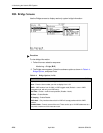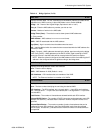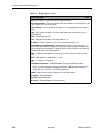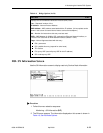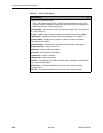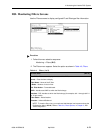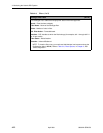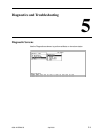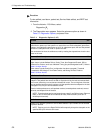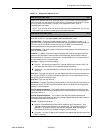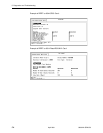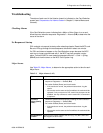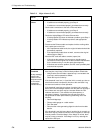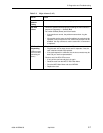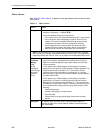
5. Diagnostics and Troubleshooting
5-2
April 2001 8000-A2-GB26-50
Procedure
To view selftest, card alarm, packet test, Service Node selftest, and BERT test
information:
1. From the Hotwire – DSL Menu, select:
Diagnostics
(
D
)
2. The Diagnostics menu appears. Select the submenu option as shown in
Table 5-1, Diagnostics Options, and press Enter.
Table 5-1. Diagnostics Options (1 of 2)
Selftest D-A
Displays the results of the last disruptive selftest of the DSL card. This selftest is only
performed on power up of the system or a reset of the card. Each subsystem (processors,
memory, and interfaces) reports pass or fail. If all subsystems pass, the card has passed
selftest. If a subsystem fails, reset or replace the card.
You can determine when the selftest occurred by reading the elapsed time since the last
reset on the card.
Alarms (Card Alarms) D-B
Displays all active card alarm conditions.
Major alarms include Selftest Failure, Sanity Timer, Non-Supported Chassis, DSL or
Ethernet Port Failures, and Loss of Network Timing (for ports designated as NT). Refer to
Table 5-2, Major Alarms.
Minor alarms include Config Error (configuration has been corrupted), Threshold
Exceeded for DSL Margin or Link Down events, and Wrong SN Ports. Refer to
Table 5-3, Minor Alarms.
DSL Packet Echo Test D-C
Allows you to conduct a nondisruptive packet test between the DSL card and Hotwire SN
endpoint. Test packets are sent to the SN at 10 percent of the line rate and echoed back
to this card, where they are counted and checked for errors. The running time of the test
can be specified and the test will continue until the specified time has elapsed or the test
is stopped. Only one port can be tested at a time.
Results include packets sent, valid packets received, errored packets received, errored
seconds, and elapsed time of the test.
NOTE: Errored packets and errored seconds may result if one SN has heavy Ethernet
traffic, or two or more SNs have moderate to heavy Ethernet traffic (such as in a
multidrop environment).
SN Selftest D-D
Allows you to perform a power-on Service Node selftest. A port number can be selected
to perform the test.
NOTE: Entering yes in the Reset SN field will temporarily disrupt the data path on the
specified DSL port while the SN resets.



